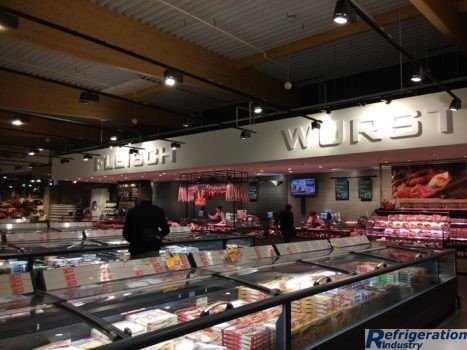Read recommendations of company
JD Refrigeratio, Australia about operation and diagnosis your commercial refrigeration equipment. Most of the commercial refrigeration equipment can last for many years, however, at some stage, you will have to inspect your old appliance and have it replaced if needed. But how understand when it’s time to buy a new industrial refrigeration unit and how to extend your fridge or freezer lifespan, once you replace the old one? Read below.
 1. Any abnormal noises?
1. Any abnormal noises?
Does your freezer or refrigerator make loud rattling sounds, or recently it started producing more noise than usual? It doesn’t have to mean you appliance broke for good, but it’s time to contact a specialist to check it. You can easily eliminate excessive noise, by regular cleaning of your unit’s compressor and coils, along with the area around the equipment itself. We also recommend checking the airflow of your compressor’s fan. Partially blocked or dirty compressor fans have to work harder to cool the stock in the unit, which significantly shortens its life.
2. Your fridge or freezer doesn’t keep food cold enough?
Commercial fridges should hold temperatures between 2 and 4 degrees Celsius, while commercial freezers are designed to hold between -20 and -17 degrees Celsius. Temperature fluctuations can result in product waste – which in turn costs your business money – so you should consider buying a new unit if you have experienced this issue. Make sure your fridge mechanics install your replacement fridge or freezer on a ground surface that’s far from heat-generating appliances such as ovens and deep fryers. Operating in high temperatures can cause the coil to malfunction, what may result in temperature increase inside a unit and then food loss. Moreover, you should avoid installing refrigerators in dusty or humid areas, which are just as damaging to compressors as placing refrigerators in excessively hot environments. This is a common problem in Australia, where temperatures get quite high in the summertime.
3. Does your refrigeration unit look damaged on the outside?
When it comes to refrigeration equipment, appearance is important. If your unit looks quite damaged, it’s probably time to replace it. Here are a few signs when it’s time to replace it. – The hinges are sticking away from the cabinet. – There are cracked seams or welds. – You can see exposed insulation. – The gaskets are worn. Another issue that might be worth checking is determining whether the unit’s door is closing and sealing properly. Having air leaking out of your commercial fridge or freezer forces the compressor to work harder what causes higher power usage and may lead to food spoilage.
4. Could your unit’s floor be rotten?
It sounds disgusting, but it’s pretty common for the floors in refrigerators and freezers to rot over time. It’s pretty normal for things to spill in your refrigerator as you or your staff take things out and put things back in. However, make sure your team checks and cleans the unit’s floor at regular intervals. Some spills are quite hard to notice if they seep into corners or cracks. If the bottom of your refrigerator or freezer is getting warped or soft, don’t try to clean it, just buy a new one.
5. Are your power bills getting bigger?
Even though your 10-year-old commercial refrigerator or freezer may seem to be working efficiently, chances are it’s not as energy efficient as it should be. It’s also probably out of warranty, which means you’re most likely spending more money on repairs than you would if you just purchased a new unit. Buying a new an up-to-date model will not only save you money on electricity bills but will also reduce the long run costs because it’s far less likely to break.
Source 